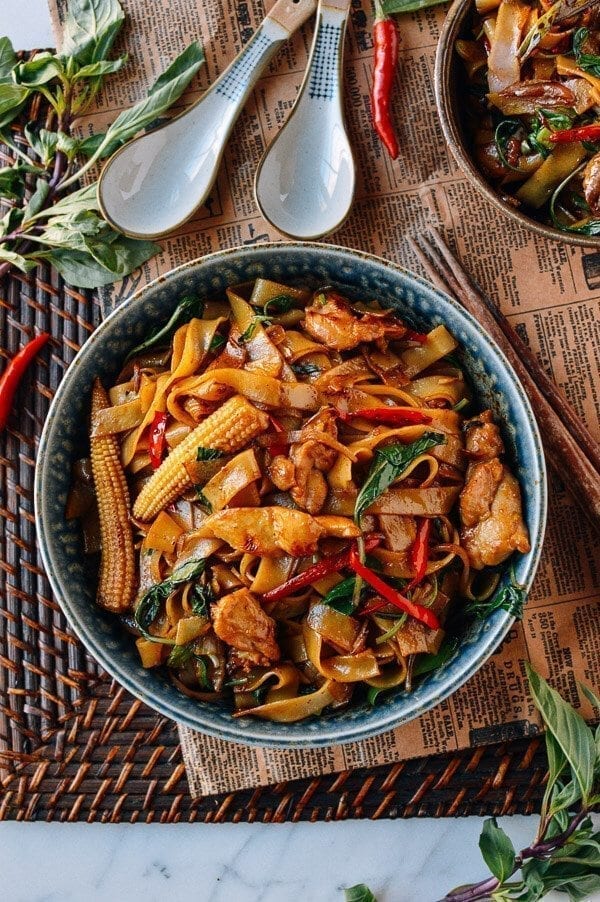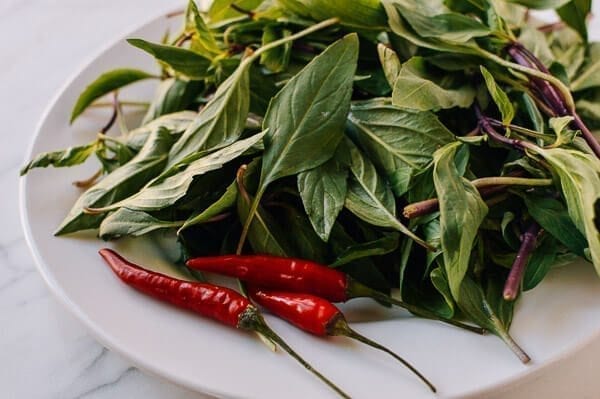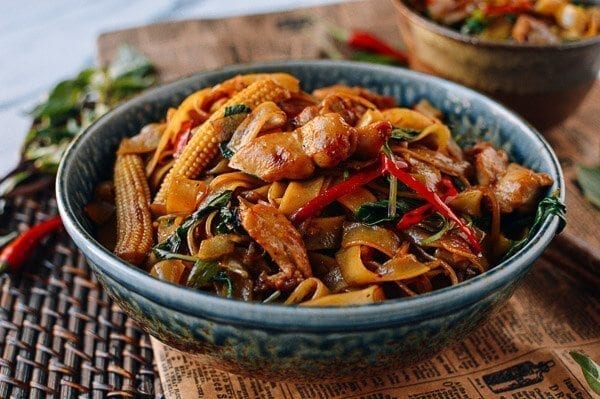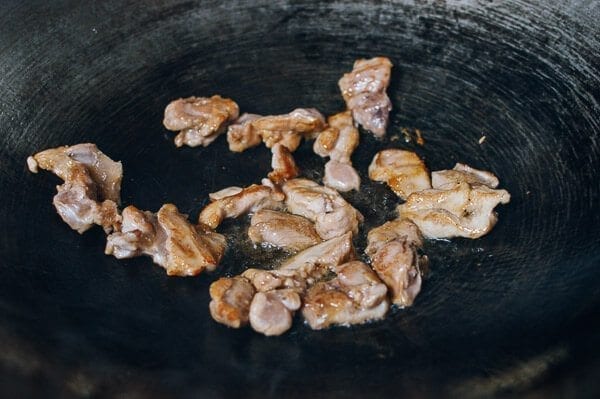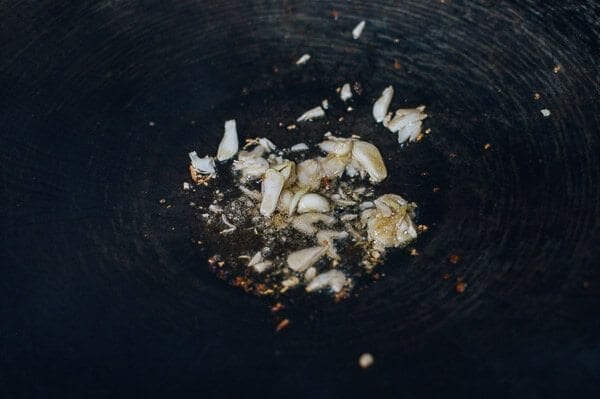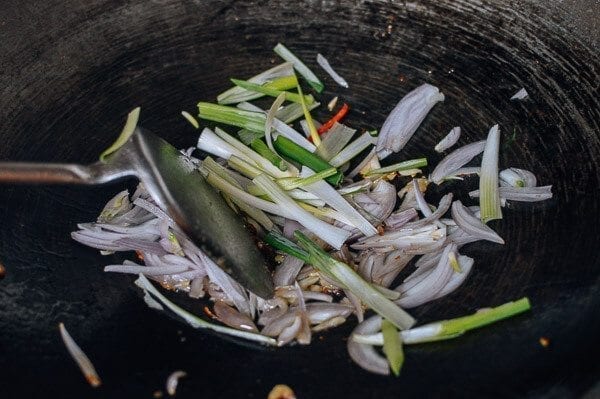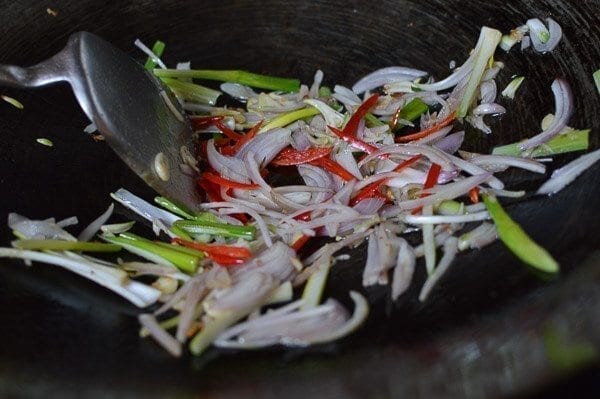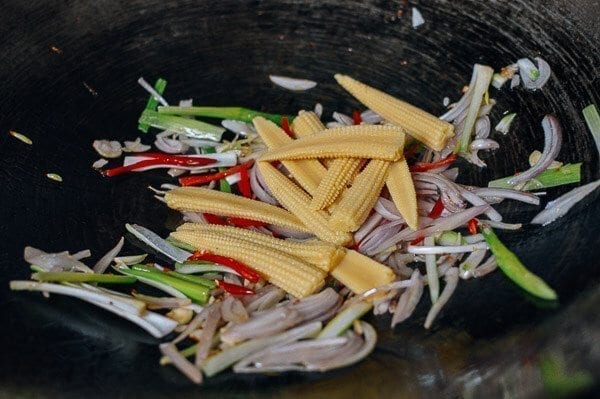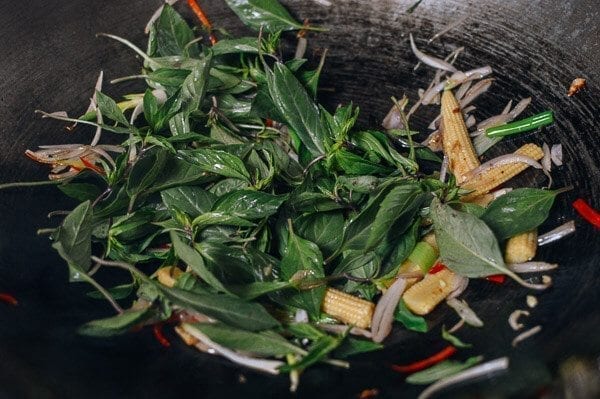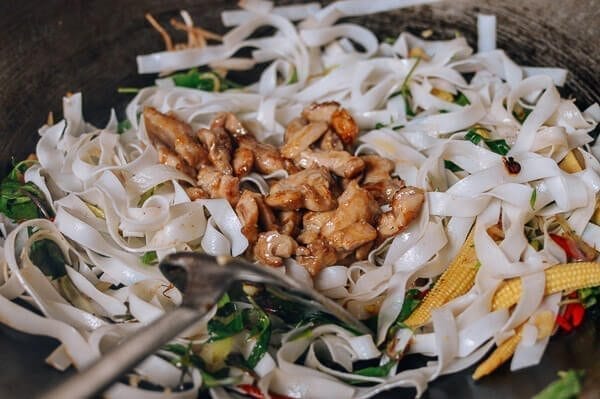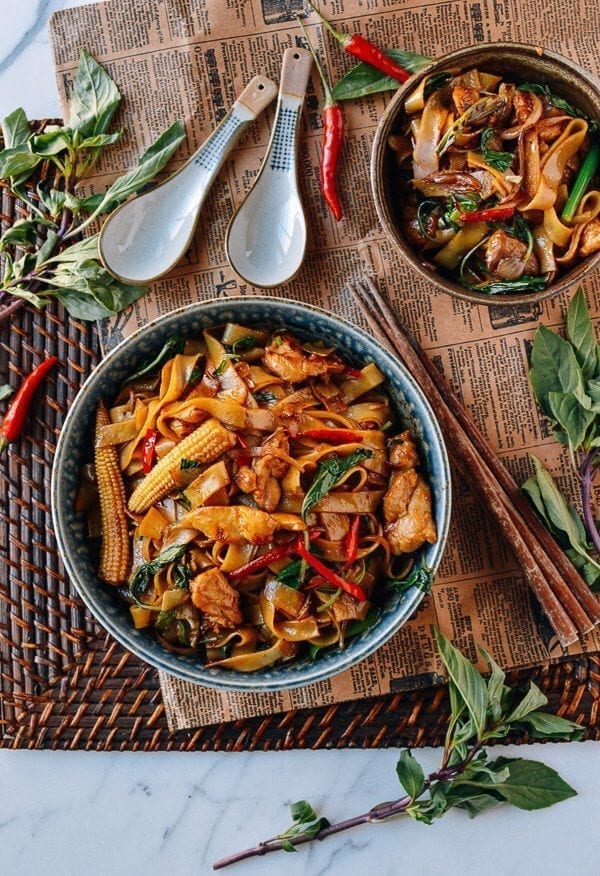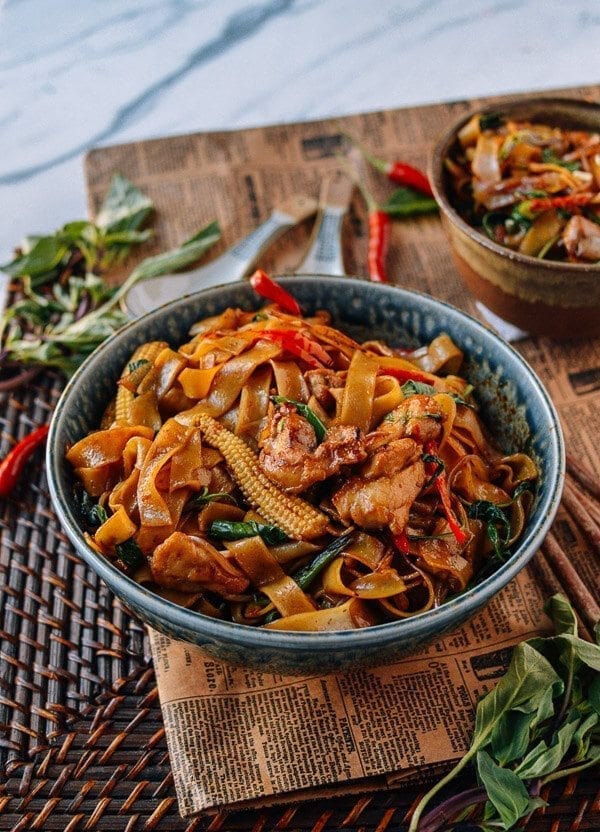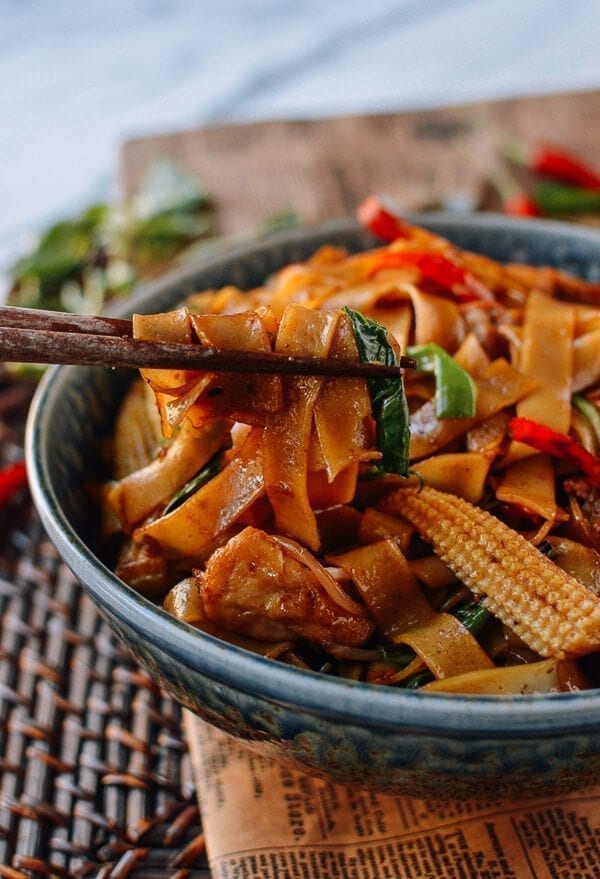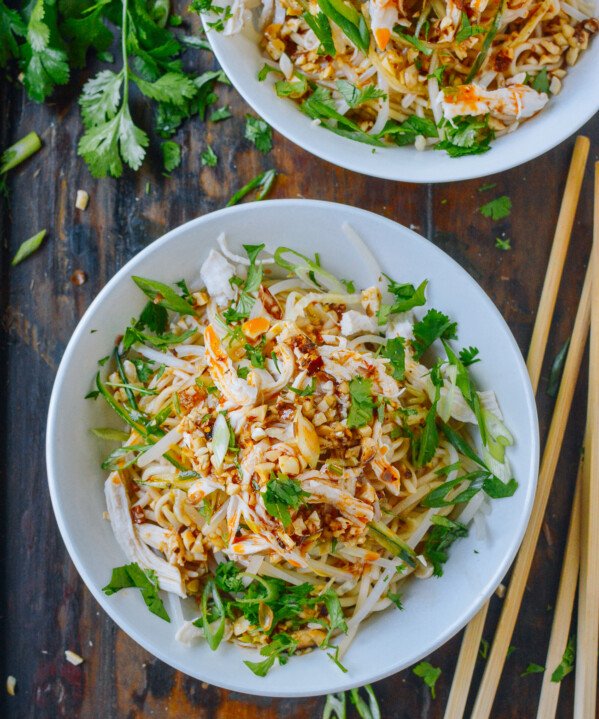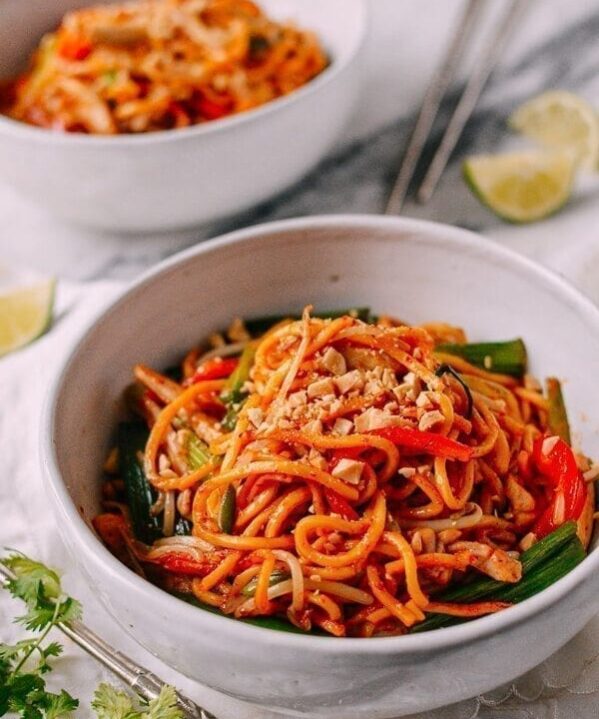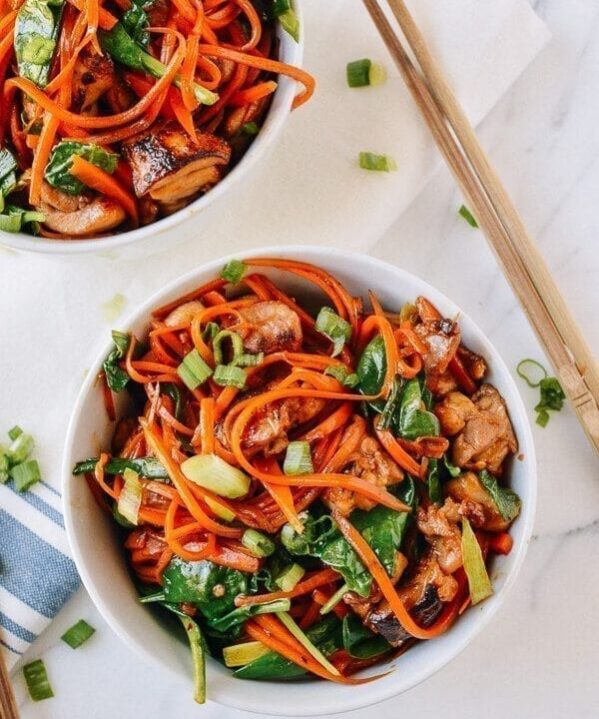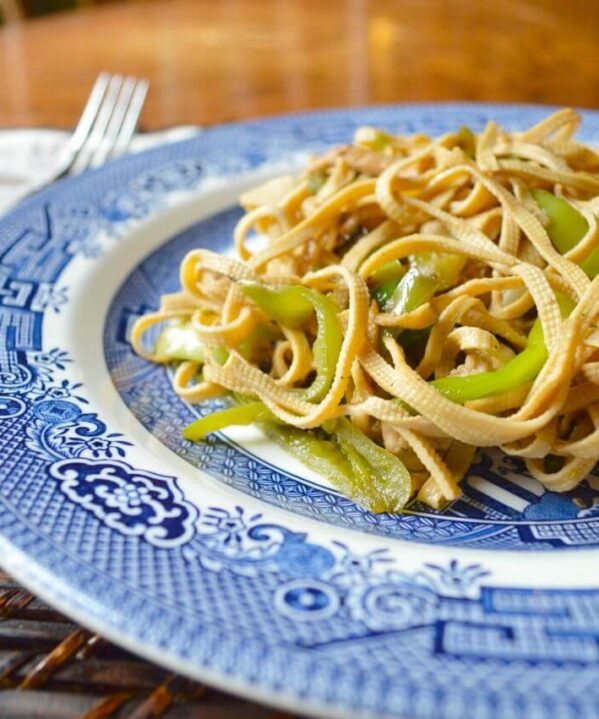If you love Thai food, then you’re probably already familiar with drunken noodles, or pad kee mao. There are a few theories about the origin of the name. The most common explanation is a simple one: these noodles are perfect after a night of drinking with friends.
Which Noodles to Use in Drunken Noodles
If you have this dish in Thailand, you’ll likely be eating fresh rice noodles. You can find those in the refrigerated section of your local Asian grocery––near all the other fresh noodles. However, fresh rice noodles can sometimes be hard to locate, even in Chinese groceries. They also don’t last very long in the refrigerated, and must be used soon after buying.
When we blogged this particular recipe, we used a Chinese brand of dried wide rice noodles. The good news is, they came out really well!
The noodles were soft and chewy, coming pretty close to the fresh rice noodles we use in our Beef Chow Fun. The best part? You can keep the dried noodles in your pantry any time the mood for drunken noodles strikes! Look for them in the Asian market in the dried noodle aisle.
Combine those rice noodles with spicy chili peppers, basil, fish sauce, and chicken, and this drunken noodle recipe is awesome…regardless of whether you’re in a drunken stupor or just enjoying dinner on a weeknight or lazy Sunday.
A Note On Thai Basil
One disclaimer I must make is about the type of basil used in this dish. I know people can be purists about using holy basil versus Thai basil, but Thai basil is often easier to get in Asian markets here in the U.S., and it works great in this recipe.
Thai basil and holy basil have their own special flavor missing from regular old Italian basil, so my rule is that you must use one of these two types. Thai basil has a cinnamon-y, anise flavor, while holy basil has an event more fragrant licorice-like taste. They are very different from your run of the mill sweet Italian basil.
Sarah has a different view. She emphasizes in her Pad Gra Prow recipe that Italian basil is better than no basil at all.
I can sort of agree with that, especially if it’s difficult to find Thai basil locally. BUT even if you do use Italian basil because all you can find, you must seek out Thai basil at some point to try in this dish. Try the Thai or holy basil once, and I will bet that you will never settle again for any substitute.
Go make this drunken noodles recipe (aka pad kee mao) now and you’ll wonder what else you’ve been missing in life! It’s seriously that good, folks.
Drunken Noodles: Recipe Instructions
Work the two tablespoons of water into the chicken with your hands until the chicken absorbs the liquid. Add the soy sauce (Thai thin soy sauce preferred), oil and cornstarch, and mix until the chicken is evenly coated. Set aside for 20 minutes. For more information and preparing chicken for stir fries, see my post on Chicken velveting 101.
Follow the directions on the dried rice noodle package to prepare them. What I usually do is fill a stainless steel bowl with hot tap water to soak the noodles for about 15-20 minutes. Then I just drain them and set aside.
Stir together the dissolved brown sugar/water mixture, soy sauces (Thai soy sauce preferred), fish sauce, oyster sauce, and white pepper in a small bowl and set aside.
Heat your wok until it’s close to smoking, and spread 2 tablespoons of oil around the perimeter of the wok.
Add the chicken and let it sear for 1 minute on each side until it’s about 90% cooked. Remove from the wok and set aside. If the heat was high enough and you seared the meat correctly, your wok should be still clean with nothing sticking to it. If not, you can wash the wok to prevent the rice noodles from sticking.
Continue with the wok on high heat and add 1 tablespoon of oil, along with the garlic and grated ginger.
After a few seconds, add the shallots. Stir-fry for 20 seconds and add the scallion, Thai red chili peppers, Thai basil (or holy basil), baby corn and Shaoxing wine.
Stir-fry for another 20 seconds and add in the rice noodles. Use a scooping motion to mix everything for another minute until the noodles warm up.
Next, add the prepared sauce mixture. Stir-fry at the highest heat for about 1 minute until the noodles are uniform in color. Take care to use your metal spatula to scrape the bottom of the wok to prevent sticking. Add the seared chicken and stir-fry for another 1 to 2 minutes.
Serve your Drunken Noodles (Pad Kee Mao) immediately with your favorite chili oil!
Drunken Noodles (Pad Kee Mao)
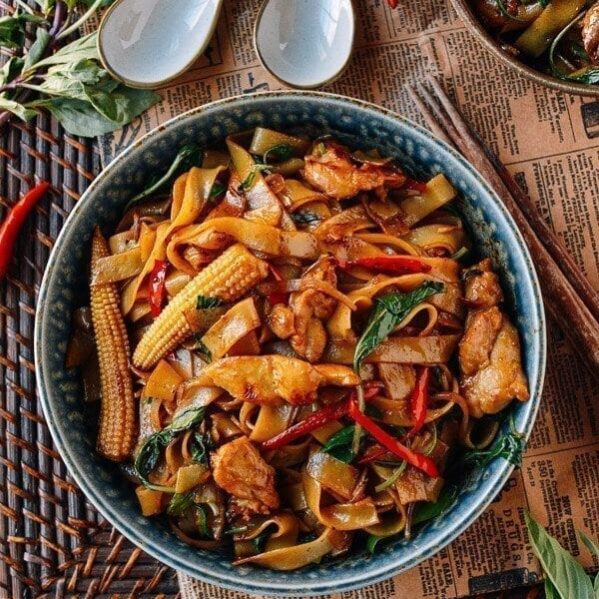
Ingredients
For the chicken & marinade:
- 2 tablespoons water
- 12 ounces sliced chicken thighs or chicken breast (340g)
- 1 teaspoon soy sauce
- 1 teaspoon oil
- 2 teaspoons cornstarch
For the rest of the dish:
- 8 ounces wide dried rice noodles (225g)
- 1 1/2 teaspoons brown sugar (dissolved in 1 tablespoon hot water)
- 2 teaspoons soy sauce (Thai soy sauce preferred)
- 1 teaspoon dark soy sauce
- 1 tablespoon fish sauce
- 2 teaspoons oyster sauce
- pinch ground white pepper
- 3 tablespoons vegetable or canola oil (divided)
- 3 cloves garlic (sliced)
- ¼ teaspoon fresh grated ginger
- 2 shallots (sliced, about 1/3 cups)
- 1 scallion (julienned into 3-inch pieces)
- 4 Thai red chili peppers (deseeded and julienned)
- 1 cup holy basil or Thai basil (loosely packed)
- 5 to 6 pieces baby corn (split in half, optional)
- 2 teaspoons Shaoxing wine
Instructions
- Work the 2 tablespoons of water into the sliced chicken with your hands until the chicken absorbs the liquid. Add 1 teaspoon soy sauce, 1 teaspoon oil, and 2 teaspoons cornstarch, and mix until the chicken is evenly coated. Set aside for 20 minutes.
- Follow the directions on the rice noodle package to prepare your noodles. What we usually do is prepare a stainless steel bowl with hot tap water to soak the noodles for about 15 minutes. Then we just drain them and set aside for cooking.
- Stir together the dissolved brown sugar mixture, soy sauces, fish sauce, oyster sauce, and white pepper in a small bowl and set aside.
- Heat your wok until it’s close to smoking, and spread 2 tablespoons of oil around the perimeter of the wok. Add the chicken and let it sear for 1 minute on each side until it’s about 90% cooked. Remove from the wok and set aside. If the heat was high enough and you seared the meat correctly, your wok should be still clean with nothing sticking to it. If not, you can wash the wok to prevent the rice noodles from sticking.
- Continue with the wok on high heat and add 1 tablespoon of oil, along with the garlic and grated ginger.
- After a few seconds, add the shallots. Stir fry for 20 seconds and add the scallions, chili peppers, basil, baby corn and shaoxing wine. Stir-fry for another 20 seconds and add in the rice noodles. Use a scooping motion to mix everything for another minute until the noodles warm up.
- Next, add the prepared sauce mixture and stir-fry at the highest heat for about 1 minute until the noodles are uniform in color. Take care to use your metal spatula to scrape the bottom of the wok to prevent sticking.
- Add the seared chicken and stir-fry for another 1 to 2 minutes.
- Serve!
nutrition facts
Note: We originally published this post on March 4, 2016. We have since updated the post with clearer instructions and helpful links. Enjoy!
